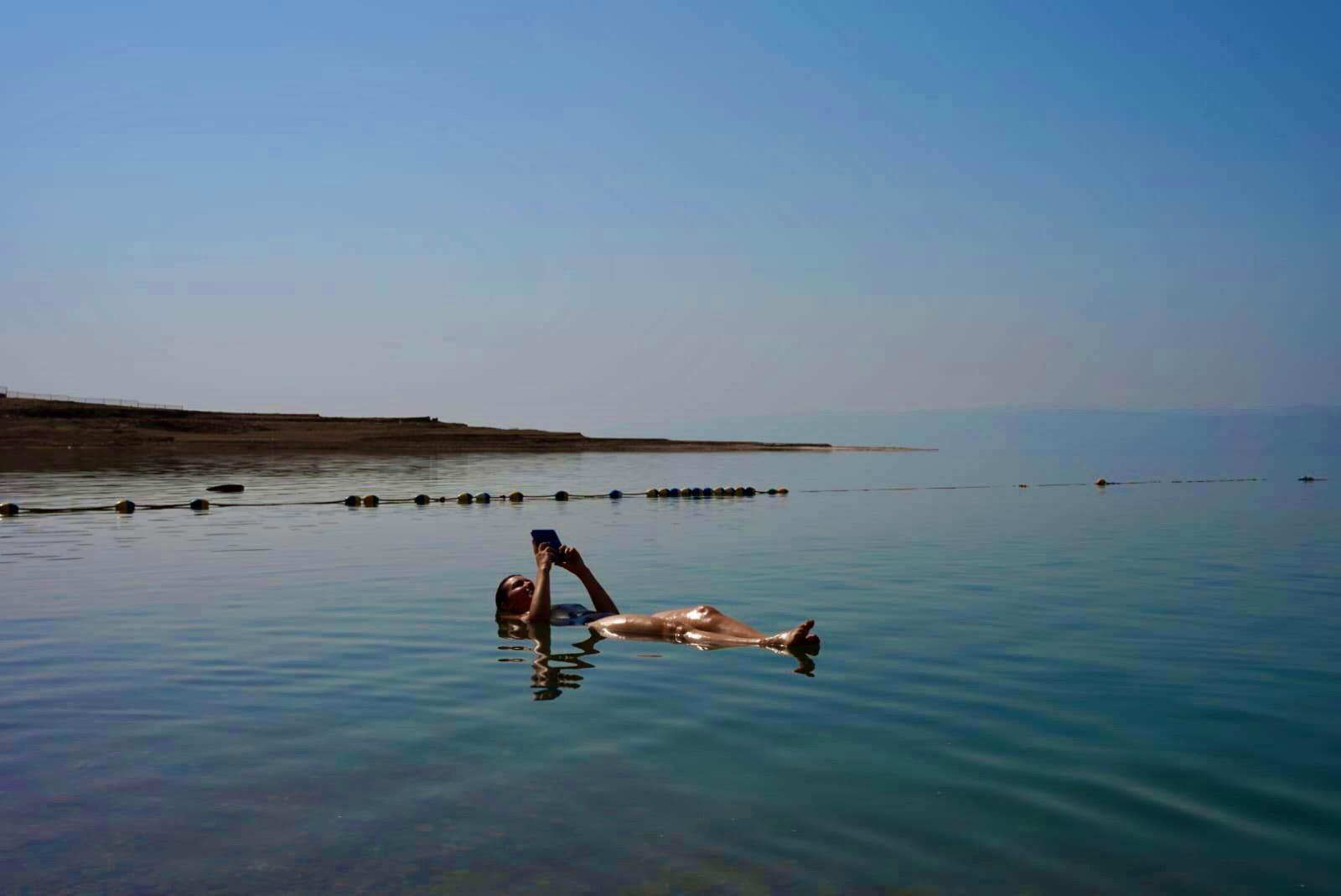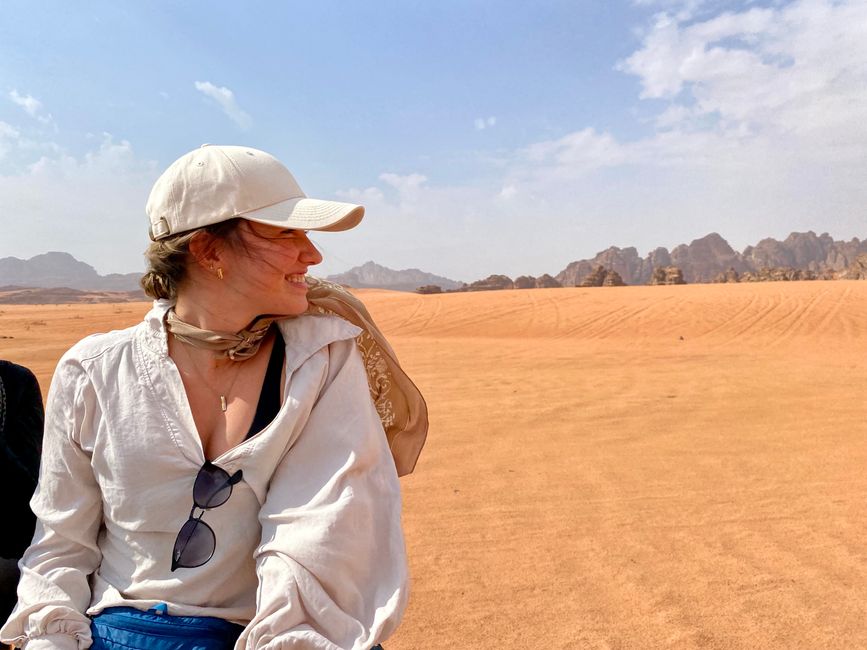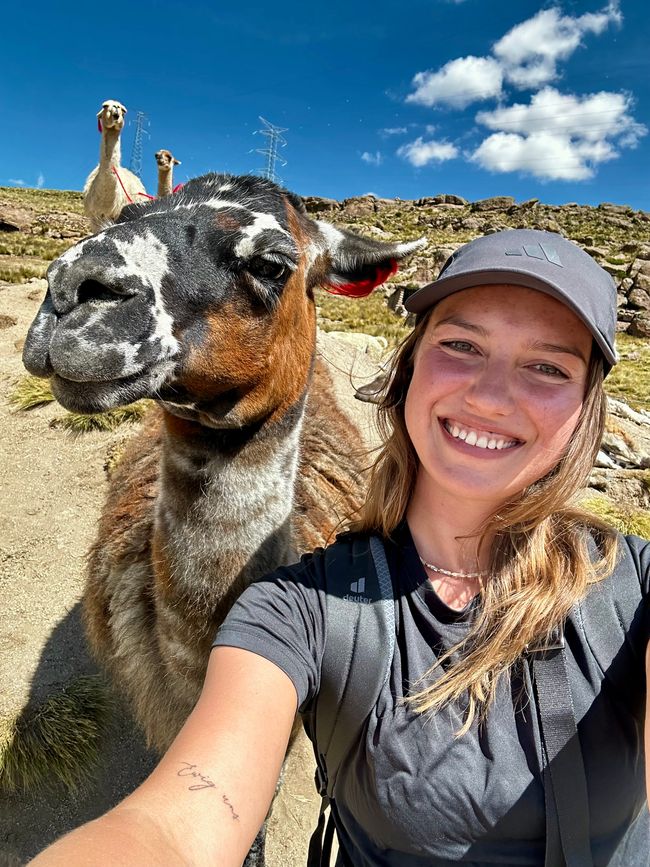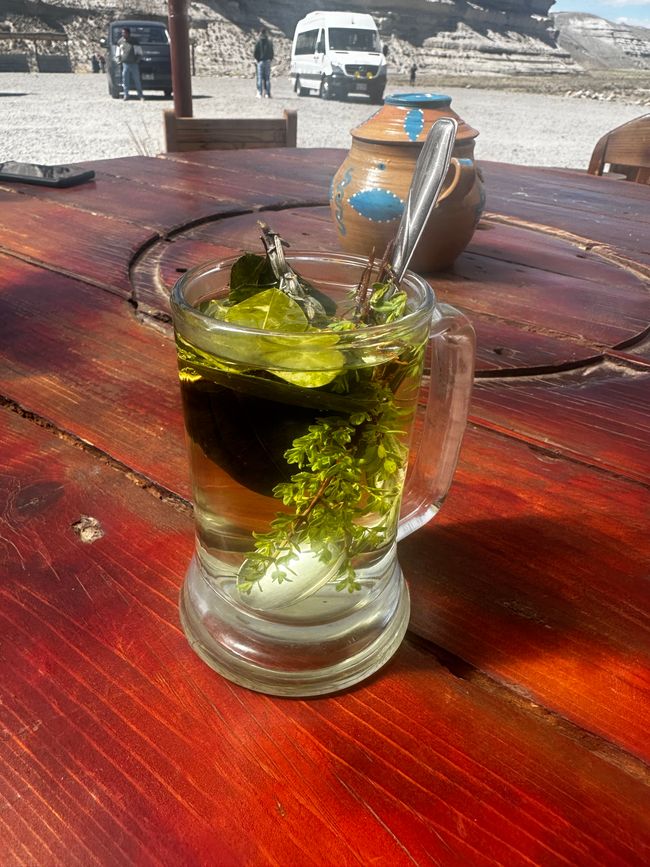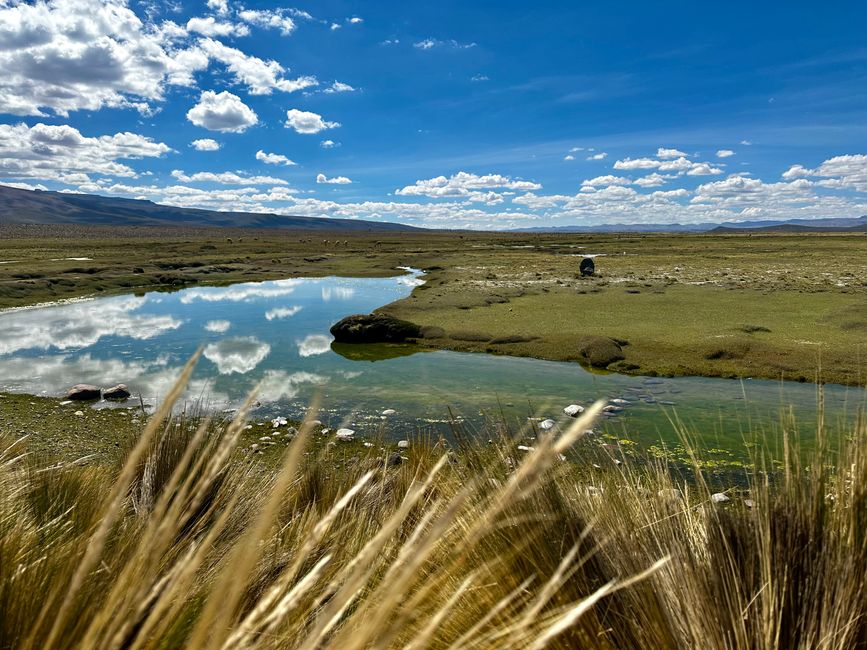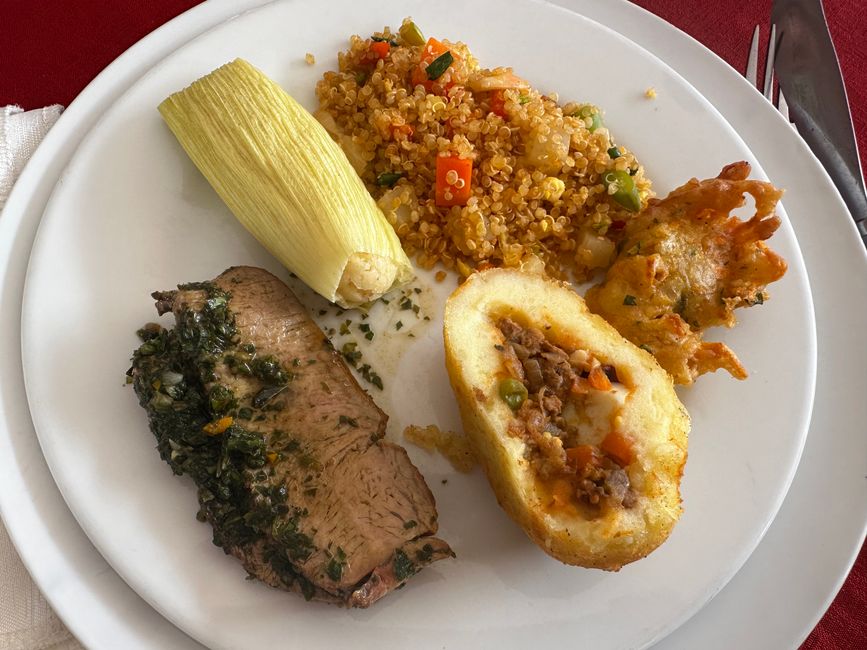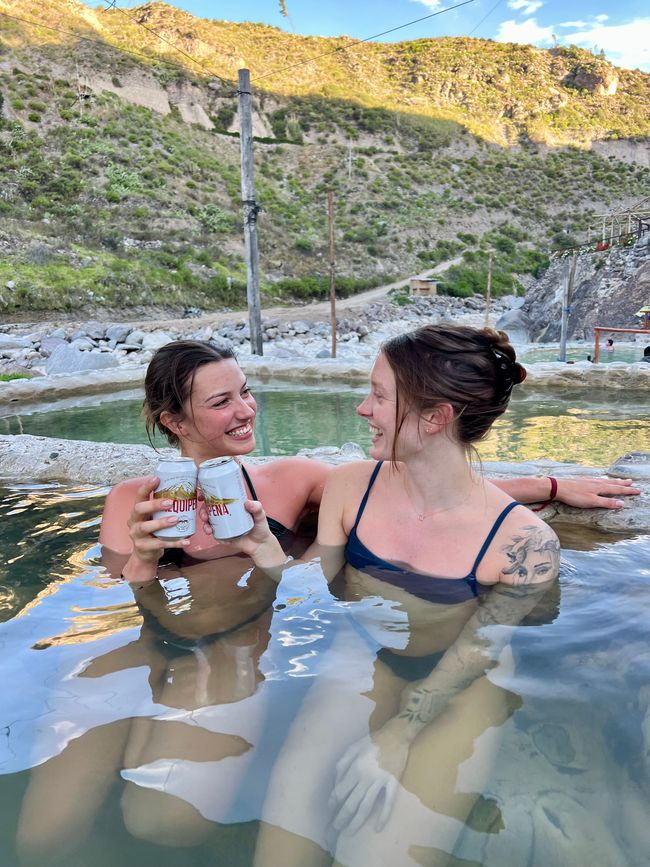Colca Canyon
Δημοσίευσε: 12.05.2024
Woke up on the night bus, the clock says 4:30 a.m., it's pitch black outside. We were supposed to arrive in Arequipa at 5 a.m., but a truck overturned on the main road, causing a traffic jam and a huge queue. There's not much we can do on the bus, but when we finally get there at 6:30 a.m., Peru Hop quickly organizes the transfer to our hostels. This is important for me because I actually want to head straight to the Colca Valley, where I'm being picked up at 7:30 a.m. So I get myself taken to the hostel, which I won't be checking into, get ready for the day by the pool there and stand by the side of the road again - ready to be picked up. What I learned when I was picked up a few days ago in Lima: It can take a while and the bus will come. To be honest, at some point I start to wonder whether anyone else will come at all, but I can put that aside when I'm finally sitting on the bus after 55 minutes. Since I am also the last one to be picked up, we head straight out of the city to the north of the city and climb the first few meters of altitude.
Today we drive from Arequipa at around 2,300m up to 4,800m and have a breathtaking view of the surrounding volcanoes: the 5,822m high conical volcano Misti, the 6,057m high Chichani and the smaller, more distant Picchu Picchu. When we reach 4,800m later, we will even see more volcanoes and even then every meter through the Pampa Cañahuas is an eye-catcher!
As we "entered" the nature reserve, we saw the first vicuñas, eating and walking around peacefully. I now also learned the differences between the South American camelids, starting with the llamas: They are the "sheep of the Andes" (easily recognizable by their thick fur), are the largest of the camelids here in the Andes, have an extended mouth and a long neck. Alpacas do not grow as large, have a shorter head and fluffier fur than that of llamas. Vicuñas are slim and small camelids and are under strict protection, especially here, as they are not domesticated. As we drive past, we are allowed to get out of the bus, but keep our distance so as not to disturb the herd.
During our first break, we are also recommended our first drink: Andean tea, which helps us get used to the altitude. The tea is an infusion of herbs/leaves from coca, muña, chachacoma and toca blanca - all of which are used to combat altitude sickness. After three to five minutes, we are allowed to try it: the taste is reminiscent of a bitter mint and herbal tea, which calms me down. From now on, it only goes higher and if the home remedy that is supposed to help me here on land doesn't taste good, I'd be lost.
Our next stop takes us to a small hill where some alpacas and llamas are standing, lying and sitting, probably waiting all day for groups of tourists like us to stop and explore, pet and photograph them. Of course, I don't need to be told twice; after all, I have to be able to tell the difference between camelids if I ever find myself in the pampas in the Andes again. I think it's easy to see from the picture how much joy I have at finally being able to see and touch the animals of the Andes. After having already seen and touched the turtles in the Pacific in Peru, this is definitely another highlight and I'm so happy to be here.
After a while we reach the announced 4,800m high Mirador de Patapampa and see numerous other volcanoes, as I had already announced. One of them is currently active, the Sabancaya at 5,980m (spoiler: we will see it again later). Today's tour pauses for lunch in Chivay, where we indulge in a heavenly buffet and try all kinds of local dishes from the Colca Valley. I also try alpaca meat, which is of course quite common here, but still feels wrong after the cuddle session an hour ago. I also reach for salad and fresh vegetables for the first time - a mistake I still regret tonight.
After lunch, I change to another bus where Michelle is waiting for me. I had convinced her to do this tour a few days ago, but unfortunately we ended up in different buses in the morning. Now we head off together to our hotel in Yanque, a small neighboring town of Chivay. We get some water from the only market in town and check in at the hotel before we head off straight away. Because of the many surrounding volcanoes, there are natural hot springs near Yanque that are also used by locals who don't have hot water at home, for example. It's only a 20-minute walk there and we enjoy the view of the Colca Valley in the 40-degree water of the Baños Thermales de Chacapi on the Rio Colca with a local Arequipa beer. The way back after the beer, the hot water, the relaxed muscles and the steep climb is more strenuous than the way down - especially in flip-flops. We stick out our thumbs (in the middle of nowhere) and our rescue actually arrives: a local private bus with a nice older gentleman at the wheel who waves us in - our rescue!
After a short drive he drops us off in Yanque and we arrive at the hotel exhausted from the day and the altitude. After a warm shower and a few snacks (there wasn't much room left after the lunch buffet anyway), Michelle and I just lie around in the hotel room, read, chat and hide under the three wool blankets. It gets as cold as 3 degrees here at night, so we're glad of the "thick fur" of the night and the heavy blanket that calms us down.
Unfortunately, the night is short for me because I wake up in the middle of the night with terrible stomach cramps and have to vomit constantly. The cough that I still have is not helping my situation at all and so every 20 minutes or so I drag myself out of the wool blankets, through the cold room, into the bathroom, back and do it all again. That's what happens when you choose fresh vegetables in more distant countries. In the morning, vegetables are only available fried or vitamins in the form of fruit.
Απάντηση

Ταξιδιωτικές αναφορές Περού
